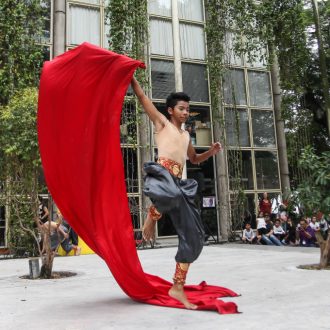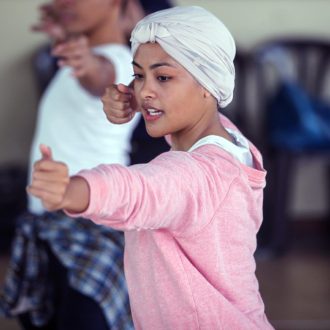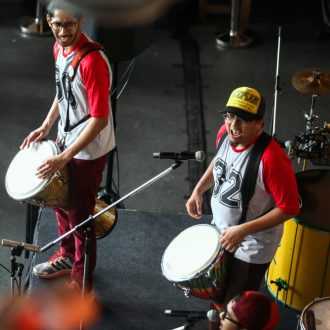Bilqis Hijjas dances through life as a director, choreographer, producer, and performer in various dance productions in Malaysia. The Harvard University alumna currently serves as the director of Balletbase, a dance company, and teaches a class on dance history at Universiti Malaya.
We recently asked her to share her exciting experiences with us. The floor is yours, Bilqis:
Some assume that ballet is a rigid dance form, imbued with rules and strict techniques. In your opinion, how does ballet help as a form of expression?
Bilqis:
Ballet has quite a strict and determined form with a lot of rules, because it’s a classical form. Classical forms have very clear aesthetics and an idea of what is good and bad in terms of technique. It takes many years of disciplined study to become a good ballet dancer, and the vast majority of people who study ballet never manage to do that.
When you look at the repertoire of great ballet works– like Swan Lake, which is a very romantic story of tragic love – as well as more contemporary versions, you can see that ballet is good for expressing all sorts of things; not just ideas about love and romance, or classical ideas about beauty, but also ideas about war and revenge, anger and fear, and modernity and technology.
Whatever you can express with any kind of dance, you can express with ballet as well.
Do you enjoy other forms of expression, besides dancing?
Bilqis:
I work as a critic, and writing is obviously an art form. At the moment, it’s the form of expression that I enjoy the most. I find critical writing to be a very creative exercise.
For me, it’s not about telling the artist what they did wrong and what they could do better; that’s not the job of a critic. To me, the job of a critic is to help the audience appreciate a work, and to give the audience an insight into a work that they wouldn’t otherwise have. So, my job as a critic is to represent the dance work as fairly and interestingly as possible, and also to give some exciting ideas about how to look at dance that the reader can take with them.
If you could perform with any dance icon in the world, dead or alive, who would it be?
Bilqis:
I don’t think that I’m able to be on stage and perform alongside a major dance icon. [Laughs] But there’s certainly a lot of people that I’d like to have tea with to ask them things. Like Rukhmini Devi, who started to formalize Bharathanatyam, an Indian classical dance, in India. She was doing an amazing thing at an amazing point in time when India was cementing itself as a nation, and Bharathanatyam fed into that sense of “Indian-ness”. So when we think about dance related to nationalism, it would be interesting to listen to her, and then understand what a Malaysian dance form could look like.
Be mesmerised by Balletbase’s performance, entitled “Stella Obscura”, at #YSDAF2018 on 18 & 19 August, from 1:30PM to 2PM at the Deck of klpac.
For more info and updates on the festival, follow us on Facebook and Instagram.



